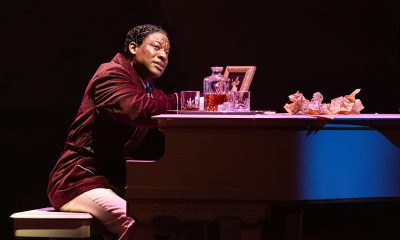Arts & Entertainment
Janis returns
Actress Davies stars again in Joplin-themed concert/theater mashup
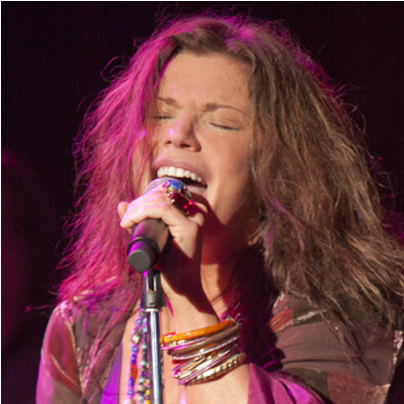
‘One Night With Janis Joplin’
By Randy Johnson
Arena Stage
Mead Center for American Theater
Runs through Aug. 11
$40-$99 for various performances
Sundays, Tuesdays and Wednesdays at 7:30 p.m.
Thursdays, Fridays and Saturdays at 8 p.m.
Saturdays and Sundays at 2 p.m.
arenastage.org
Few music lovers — relatively speaking — had a chance to see Janis Joplin live considering she died in 1970. It’s tempting to say that “One Night With Janis Joplin,” the gay-penned (by Randy Johnson) tribute show playing now at Arena Stage, is the next best thing to the now-impossible notion of going to a Joplin performance.
And while the show is that, it’s also not just a cheesy rock tribute show of the type we see given in honor of classic rock acts all the time. It’s its own musical/theatrical experience with singer/actress Mary Bridget Davies in the title role earning raves for her uncanny ability at not just channeling but recreating Joplin’s trademark gutbucket vocals.
The show was a hit at Arena last fall when nearly 20,000 people saw it in Washington. It’s had successful engagements in Portland, Cleveland and Pasadena, Calif., and will open on Broadway at the Lyceum Theatre in October.
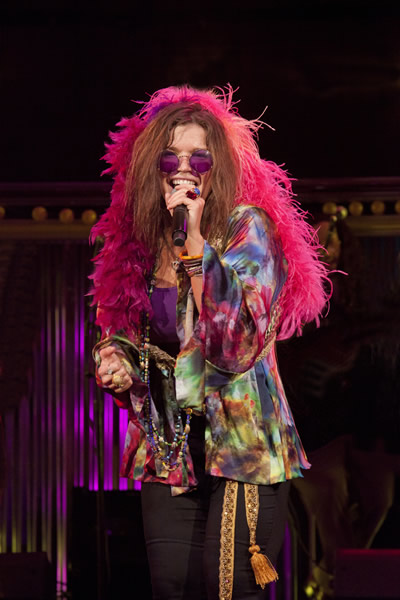
Mary Bridget Davies as Janis Joplin in ‘One Night With Janis Joplin.’ (Photo by Jim Cox; courtesy Arena)
Davies (34, straight and Helen Hayes Award-nominated for the role) whom we interviewed last year as well, took a few minutes with us by phone last week from her home in Cleveland to riff on everything from how the show has varied in different cities to why the Joplin allure remains undiminished decades after her untimely death. Her comments have been slightly edited for length.
WASHINGTON BLADE: How was the run at Arena versus other places you’ve played the show?
MARY BRIDGET DAVIES: Arena Stage runs like such a well-run ship. Nothing was ever a problem there. It was like summer camp for theater and we just had a really good time. I’m completely excited to come back.
BLADE: Some critics have said it seems like you were born to do this. Do you feel some cosmic destiny with Janis?
DAVIES: It’s weird, yeah, sometimes I do feel like she’s around. There are some accidental parallels too — frustrated attempts at college … she was just so free and I get to enjoy some of that. I mean, yes, I’m up there saying lines, I’m not just winging it, but she just had that wild abandon and I get to do that every night.
BLADE: Has the show changed since last fall?
DAVIES: Yes, it’s been evolving and getting tighter. We’re not like this tired old circus chorus walking in circles. We’ve had several little breaks so each time we come back excited to do it again. And I think we’ll enjoy it even more this time because the terrain is more familiar now.
BLADE: Have the crowd reactions varied much from city to city?
DAVIES: I was very, very nervous in Pasadena because it’s L.A., so anyone who was anyone came to the show. I mean, like, Cher was there one night. There was a lot of industry vibe there that gave it kind of a scary urgency. At Arena before, I would say we had the most forward people. People would try to get on the stage and dance. I kinda looked at the crew like, “Uh, what am I supposed to do here?” They would wrangle them off like in the Van Halen video. It’s kind of flattering that they were so moved they wanted to get up and jam but it does blur the lines a little. Secretly I was kinda OK with it as long as you don’t try to rip the mic out of my hand and say, “It’s my friend’s birthday.”
BLADE: Is it ever hard to find the balance between crowd interplay and performing it as a straight-up dramatic piece?
DAVIES: Yes. Like in Milwaukee we had this much smaller space with a modified thrust stage. It was almost more fun on one hand but also more intimidating too. If you had a bruise or something, they could see it, it was that close. As a performer you really shouldn’t let the crowd dictate the proceedings but there is something of that fourth wall break because this isn’t a straight-up dramatic piece or a musical. People don’t always realize that. They’ll be on their phone or act like they’re home watching TV. One dude went to sleep. I’m like, “Are you kidding me? This is really hard!” Another guy held a tablet on his lap and taped the entire show.
BLADE: I know technically that’s a no-no, but still, from a historical perspective, think how awful it would be if nobody had bootlegged any of Janis’s shows. We’d have so much less to go on. As long as somebody isn’t trying to profit off of it, isn’t there some value in stealth recording?
DAVIES: Oh yeah, in terms of my research and as a fan, I get that. The rock and roll part of me thinks that’s cool but then on the other hand with the copyright issues, you have to respect that too. You don’t want some 30-second barrage out of someone’s purse showing up on YouTube.
BLADE: As great a run as you’re having with this, is there some part of you that’s concerned about your entire persona and identity getting swallowed up by the myth of Janis?
DAVIES: I have people come up to me and say, “Aren’t you that Janis girl?” I wear it as a badge of honor. I think I’ve been able to maintain a balance. I just released my own album — which Arena has been very kind to let me sell at the shows — and I was nominated for a blues music award. And I take my down time to try to stay current within the industry. But you’re right, it can be a double-edged sword. … There may come a time when my heart’s not in it but for now I’m proud to be “the Janis girl.” If they were saying, “Hey, aren’t you the Ashley Simpson girl?” I’d be a lot more worried.
BLADE: Is part of the reason the show’s been such a hit is that people simply crave hearing Janis sing and this is as close as it gets at least for a live experience?
DAVIES: Yeah, I think there is some of that. It can be pretty overwhelming at times. People still go see Big Brother (Joplin’s old band) in droves, especially in Europe. People are crying. She died 43 years ago and people are still throwing themselves at my feet. Sometimes I’m like, “Whoah, I don’t know how to handle that.” I think people just miss her so much, they’ll take her any way they can get her. Other people come in rather skeptical but I always say, that’s fine. Go ahead and come in skeptical because then the end up leaving very happy.

A protest was held outside of the White House on Saturday following the killing of Renee Nicole Good by a U.S. Immigration and Customs Enforcement agent in Minneapolis. Across the Potomac, picketers held signs calling for “Justice for Renee” in Tysons, Va.
“ICE Out For Good” demonstrations were held in cities and towns across the country, according to multiple reports. A march was held yesterday in Washington, D.C., as the Blade reported. Further demonstrations are planned for tomorrow.
(Washington Blade photos by Michael Key)

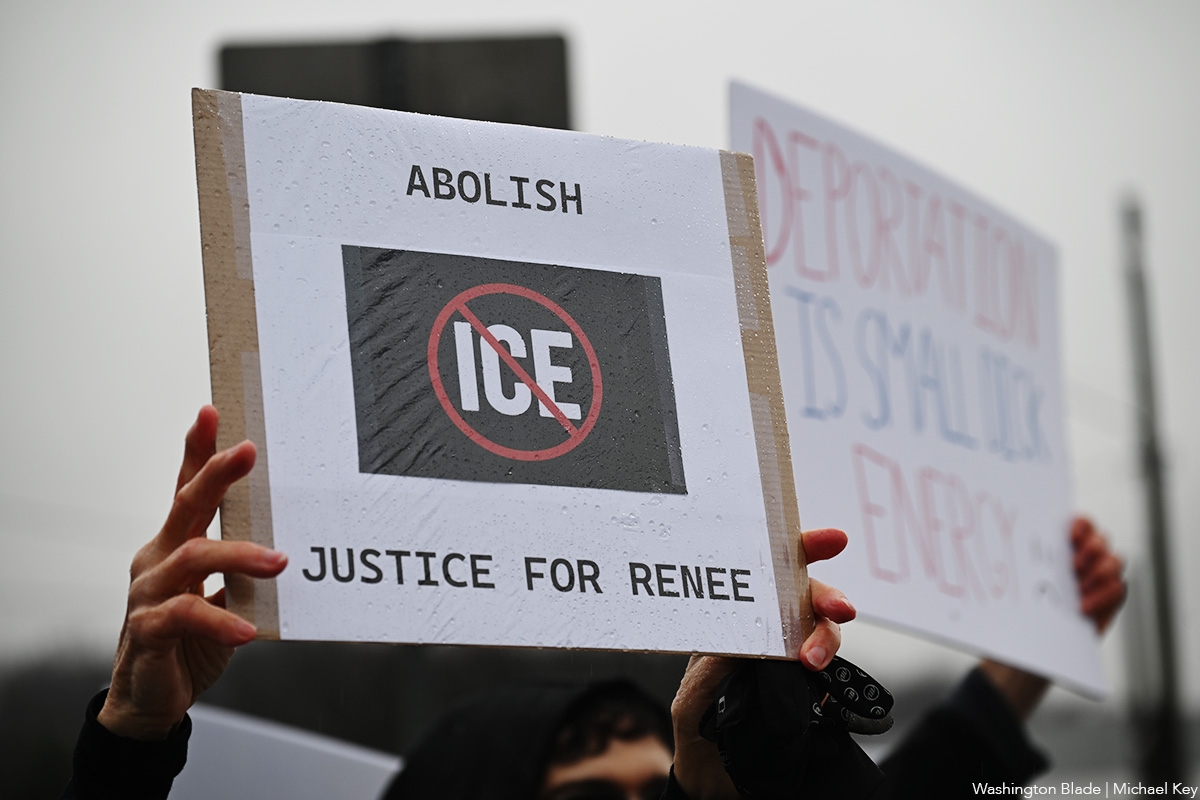
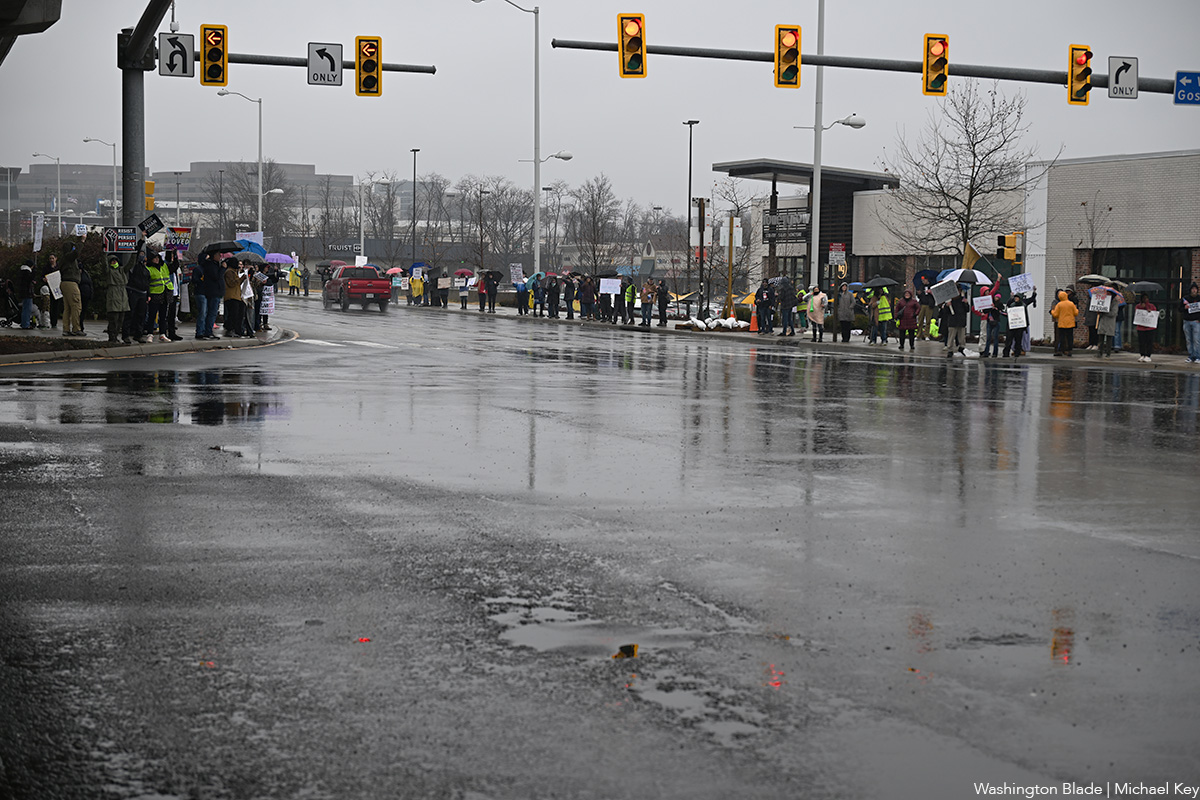
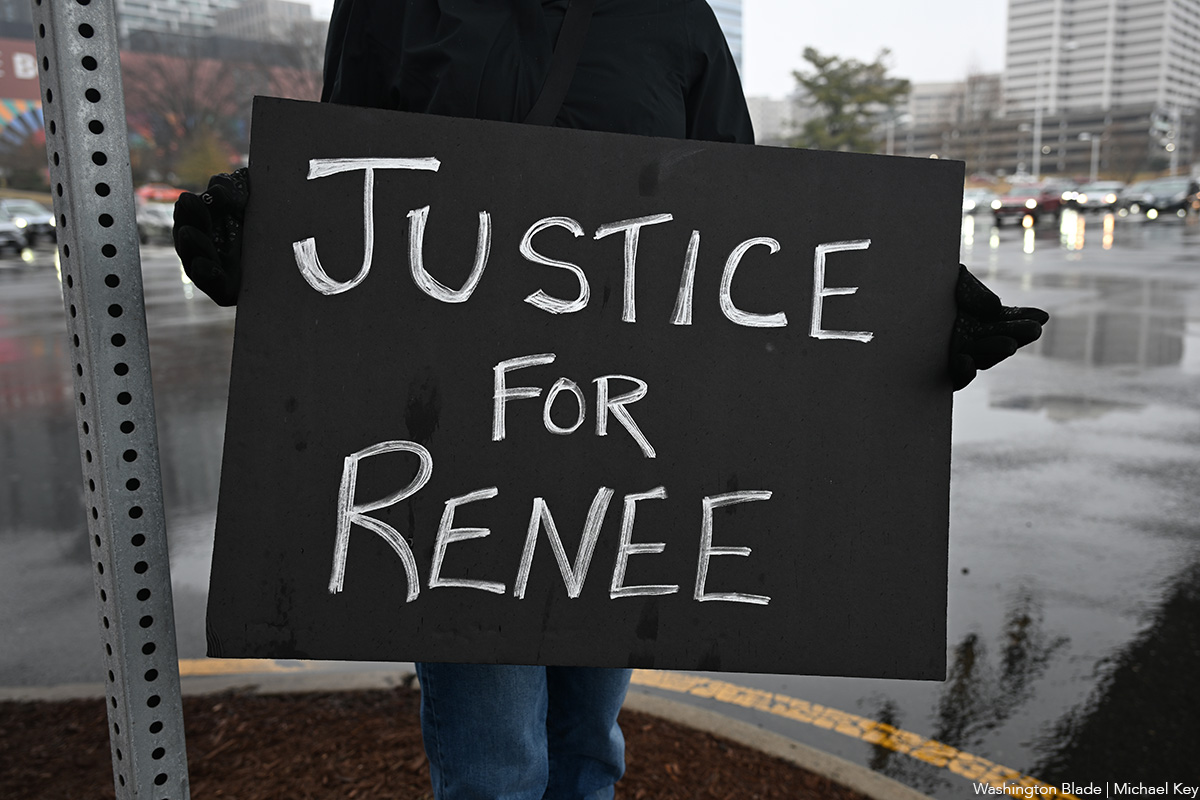





Books
Feminist fiction fans will love ‘Bog Queen’
A wonderful tale of druids, warriors, scheming kings, and a scientist
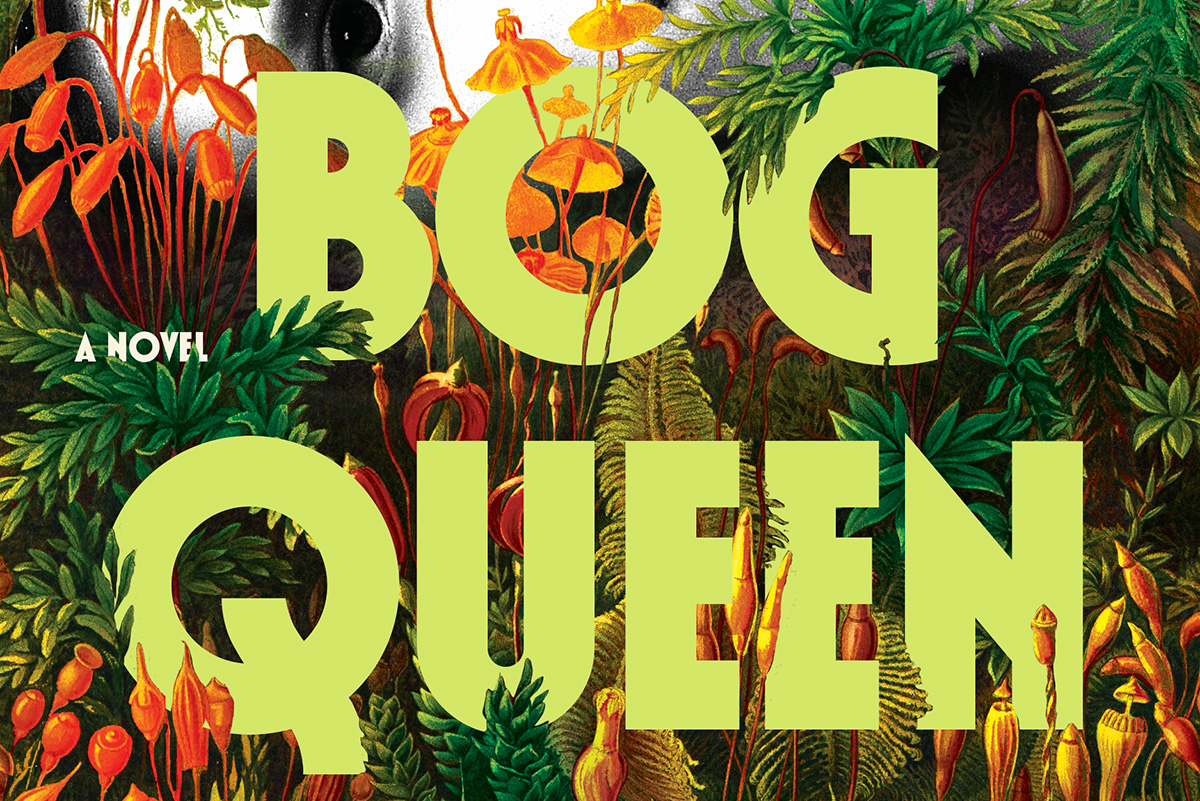
‘Bog Queen’
By Anna North
c.2025, Bloomsbury
$28.99/288 pages
Consider: lost and found.
The first one is miserable – whatever you need or want is gone, maybe for good. The second one can be joyful, a celebration of great relief and a reminder to look in the same spot next time you need that which you first lost. Loss hurts. But as in the new novel, “Bog Queen” by Anna North, discovery isn’t always without pain.

He’d always stuck to the story.
In 1961, or so he claimed, Isabel Navarro argued with her husband, as they had many times. At one point, she stalked out. Done. Gone, but there was always doubt – and now it seemed he’d been lying for decades: when peat cutters discovered the body of a young woman near his home in northwest England, Navarro finally admitted that he’d killed Isabel and dumped her corpse into a bog.
Officials prepared to charge him.
But again, that doubt. The body, as forensic anthropologist Agnes Lundstrom discovered rather quickly, was not that of Isabel. This bog woman had nearly healed wounds and her head showed old skull fractures. Her skin glowed yellow from decaying moss that her body had steeped in. No, the corpse in the bog was not from a half-century ago.
She was roughly 2,000 years old.
But who was the woman from the bog? Knowing more about her would’ve been a nice distraction for Agnes; she’d left America to move to England, left her father and a man she might have loved once, with the hope that her life could be different. She disliked solitude but she felt awkward around people, including the environmental activists, politicians, and others surrounding the discovery of the Iron Age corpse.
Was the woman beloved? Agnes could tell that she’d obviously been well cared-for, and relatively healthy despite the injuries she’d sustained. If there were any artifacts left in the bog, Agnes would have the answers she wanted. If only Isabel’s family, the activists, and authorities could come together and grant her more time.
Fortunately, that’s what you get inside “Bog Queen”: time, spanning from the Iron Age and the story of a young, inexperienced druid who’s hoping to forge ties with a southern kingdom; to 2018, the year in which the modern portion of this book is set.
Yes, you get both.
Yes, you’ll devour them.
Taking parts of a true story, author Anna North spins a wonderful tale of druids, vengeful warriors, scheming kings, and a scientist who’s as much of a genius as she is a nerd. The tale of the two women swings back and forth between chapters and eras, mixed with female strength and twenty-first century concerns. Even better, these perfectly mixed parts are occasionally joined by a third entity that adds a delicious note of darkness, as if whatever happens can be erased in a moment.
Nah, don’t even think about resisting.
If you’re a fan of feminist fiction, science, or novels featuring kings, druids, and Celtic history, don’t wait. “Bog Queen” is your book. Look. You’ll be glad you found it.
Movies
A Shakespearean tragedy comes to life in exquisite ‘Hamnet’
Chloe Zhao’s devastating movie a touchstone for the ages

For every person who adores Shakespeare, there are probably a dozen more who wonder why.
We get it; his plays and poems, composed in a past when the predominant worldview was built around beliefs and ideologies that now feel as antiquated as the blend of poetry and prose in which he wrote them, can easily feel tied to social mores that are in direct opposition to our own, often reflecting the classist, sexist, and racist patriarchal dogma that continues to plague our world today. Why, then, should we still be so enthralled with him?
The answer to that question might be more eloquently expressed by Chloe Zhao’s “Hamnet” – now in wide release and already a winner in this year’s barely begun awards season – than through any explanation we could offer.
Adapted from the novel by Maggie O’Farrell (who co-wrote the screenplay with Zhao), it focuses its narrative on the relationship between Will Shakespeare (Paul Mescal) and his wife Agnes Hathaway (Jessie Buckley), who meet when the future playwright – working to pay off a debt for his abusive father – is still just a tutor helping the children of well-to-do families learn Latin. Enamored from afar at first sight, he woos his way into her life, and, convincing both of their families to approve the match (after she becomes pregnant with their first child), becomes her husband. More children follow – including Hamnet (Jacobi Jupe), a “surprise” twin boy to their second daughter – but, recognizing Will’s passion for writing and his frustration at being unable to follow it, Agnes encourages him to travel to London in order to immerse himself in his ambitions.
As the years go by, Agnes – aided by her mother-in-law (Emily Watson) and guided by the nature-centric pagan wisdom of her own deceased mother – raises the children while her husband, miles away, builds a successful career as the city’s most popular playwright. But when an outbreak of bubonic plague results in the death of 11-year-old Hamnet in Will’s absence, an emotional wedge is driven between them – especially when Agnes receives word that her husband’s latest play, titled “Hamlet,” an interchangeable equivalent to the name of their dead son, is about to debut on the London stage.
There is nothing, save the bare details of circumstance around the Shakespeare family, that can be called factual about the narrative told in “Hamnet.” Records of Shakespeare’s private life are sparse and short on context, largely limited to civic notations of fact – birth, marriage, and death announcements, legal documents, and other general records – that leave plenty of space in which to speculate about the personal nuance such mundane details might imply. What is known is that the Shakespeares lost their son, probably to plague, and that “Hamlet” – a play dominated by expressions of grief and existential musings about life and death – was written over the course of the next five years. Shakespearean scholars have filled in the blanks, and it’s hard to argue with their assumptions about the influence young Hamnet’s tragic death likely had over the creation of his father’s masterwork. What human being would not be haunted by such an event, and how could any artist could avoid channeling its impact into their work, not just for a time but for forever after?
In their screenplay, O’Farrell and Zhao imagine an Agnes Shakespeare (most records refer to her as “Anne” but her father’s will uses the name “Agnes”) who stands apart from the conventions of her town, born of a “wild woman” in the woods and raised in ancient traditions of mysticism and nature magic before being adopted into her well-off family, who presents a worthy match and an intellectual equal for the brilliantly passionate creator responsible for some of Western Civilization’s most enduring tales. They imagine a courtship that would have defied the customs of the time and a relationship that feels almost modern, grounded in a love and mutual respect that’s a far cry from most popular notions of what a 16th-century marriage might look like. More than that, they imagine that the devastating loss of a child – even in a time when the mortality rate for children was high – might create a rift between two parents who can only process their grief alone. And despite the fact that almost none of what O’Farrell and Zhao present to us can be seen, at best, as anything other than informed speculation, it all feels devastatingly true.
That’s the quality that “Hamnet” shares with the ever-popular Will Shakespeare; though it takes us into a past that feels as alien to us as if it took place upon a different planet, it evokes a connection to the simple experience of being human, which cuts through the differences in context. Just as the kings, heroes, and fools of Shakespeare’s plays express and embody the same emotional experiences that shape our own mundane modern lives, the film’s portrayal of these two real-life people torn apart by personal tragedy speaks directly to our own shared sense of loss – and it does so with an eloquence that, like Shakespeare’s, emerges from the story to make it feel as palpable as if their grief was our own.
Yes, the writing and direction – each bringing a powerfully feminine “voice” to the story – are key to the emotional impact of “Hamnet,” but it’s the performances of its stars that carry it to us. Mescal, once more proving himself a master at embodying the kind of vulnerable masculine tenderness that’s capable of melting our hearts, gives us an accessible Shakespeare, driven perhaps by a spark of genius yet deeply grounded in the tangible humanity that underscores the “everyman” sensibility that informs the man’s plays. But it’s Buckley’s movie, by a wide margin, and her bold, fierce, and deeply affecting performance gives voice to a powerful grief, a cry against the injustice and cruelty of what we fumblingly call “fate” that resonates deep within us and carries our own grief, over losses we’ve had and losses we know are yet to come, along with her on the journey to catharsis.
That’s the word – “catharsis” – that defines why Shakespeare (and by extension, “Hamnet”) still holds such power over the imagination of our human race all these centuries later. The circumstantial details of his stories, wrapped up in ancient ideologies that still haunt our cultural imagination, fall away in the face of the raw expression of humanity to which his characters give voice. When Hamlet asks “to be or not to be?,” he is not an old-world Danish Prince contemplating revenge against a traitor who murdered his father; he is Shakespeare himself, pondering the essential mystery of life and death, and he is us, too.
Likewise, the Agnes Shakespeare of “Hamnet” (masterfully enacted by Buckley) embodies all our own sorrows – past and future, real and imagined – and connects them to the well of human emotion from which we all must drink; it’s more powerful than we expect, and more cleansing than we imagine, and it makes Zhao’s exquisitely devastating movie into a touchstone for the ages.
We can’t presume to speak for Shakespeare, but we are pretty sure he would be pleased.
-

 National5 days ago
National5 days agoWhat to watch for in 2026: midterms, Supreme Court, and more
-

 Opinions5 days ago
Opinions5 days agoA reminder that Jan. 6 was ‘textbook terrorism’
-

 District of Columbia5 days ago
District of Columbia5 days agoImperial Court of Washington drag group has ‘dissolved’
-

 Colombia4 days ago
Colombia4 days agoGay Venezuelan man who fled to Colombia uncertain about homeland’s future





